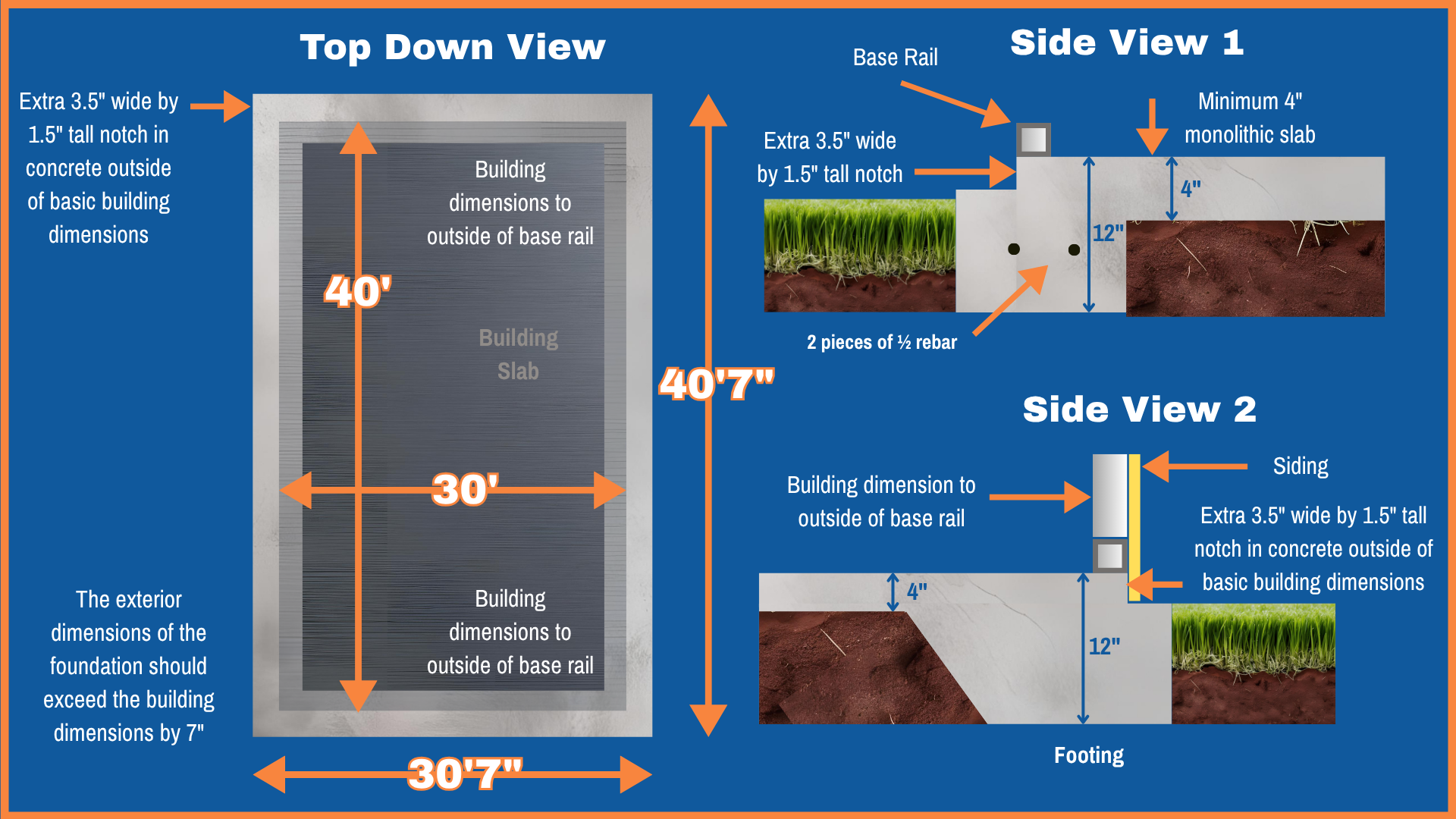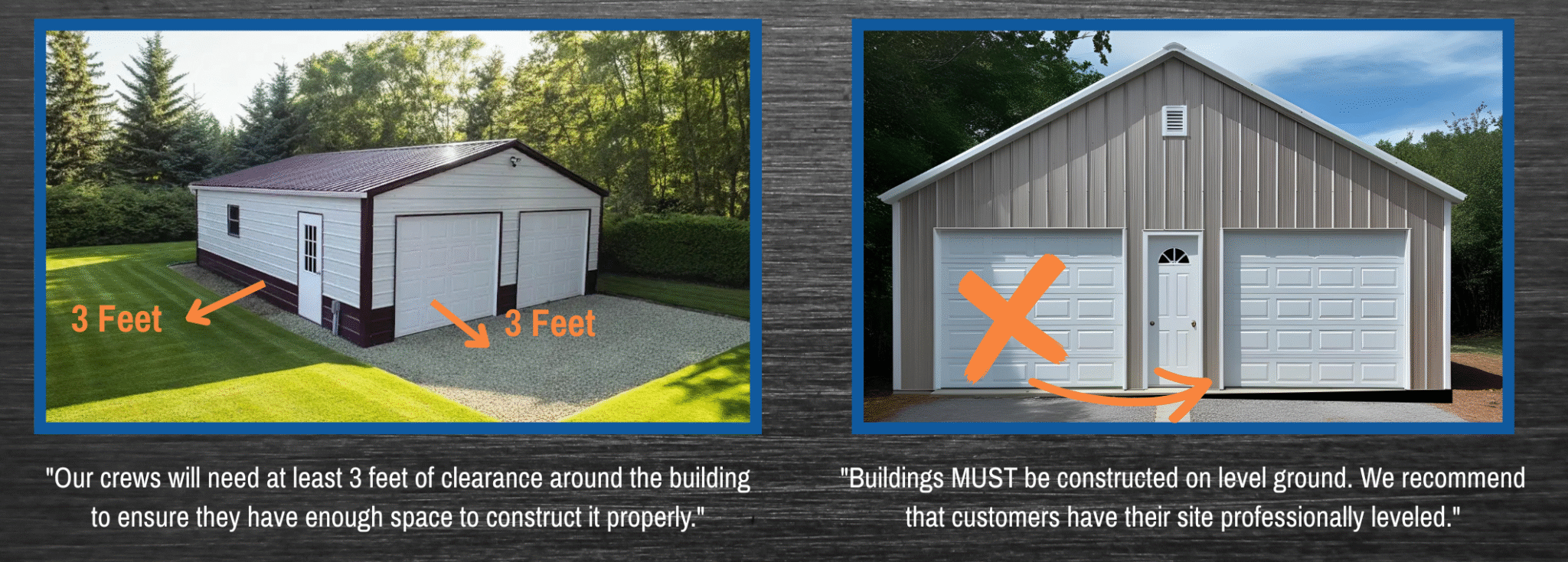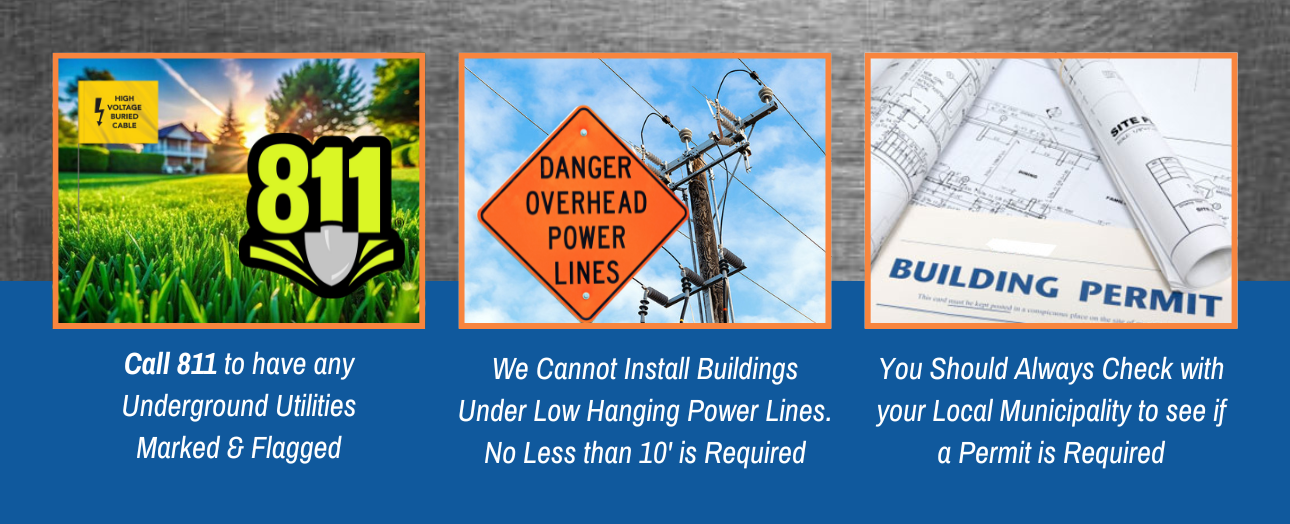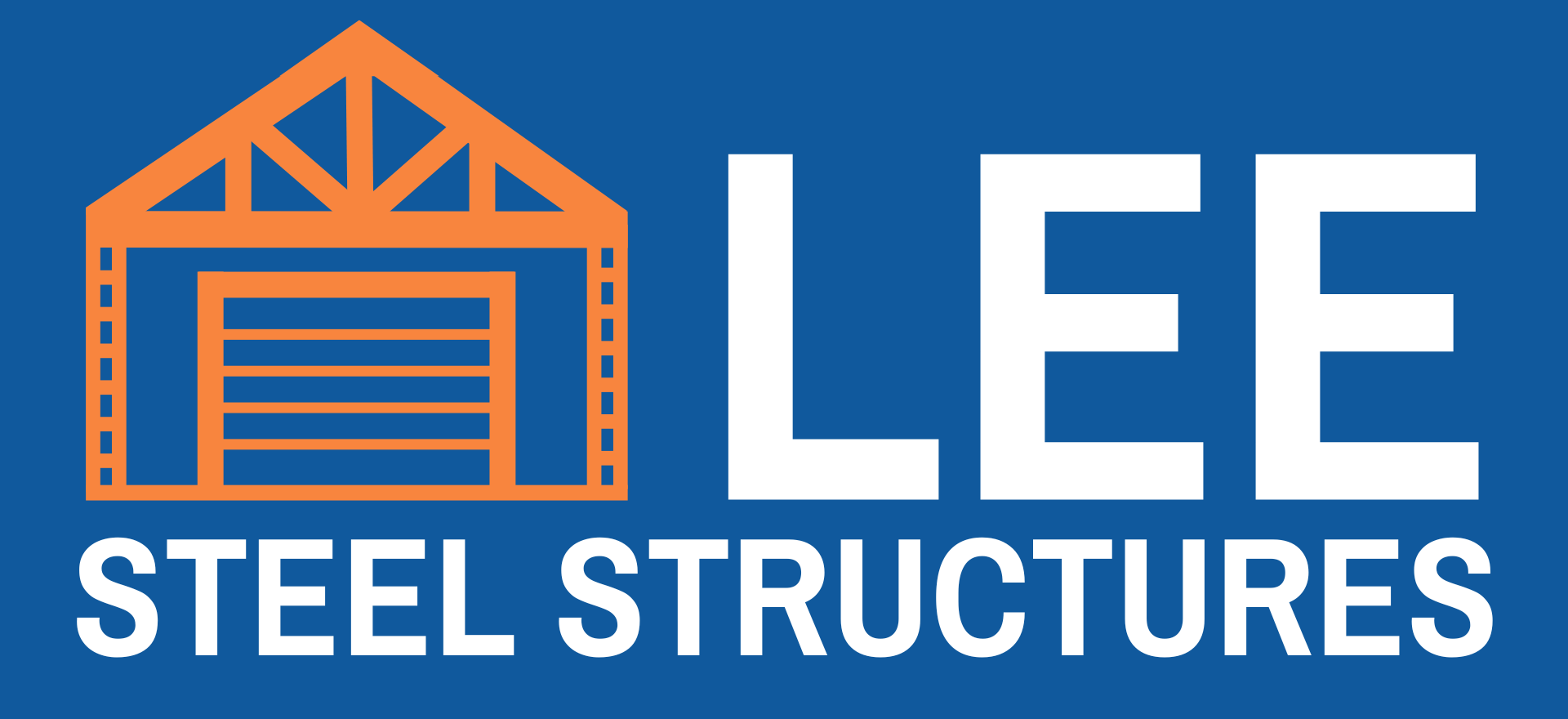Preparing the Site for Installation
THE INSTALLATION SURFACE:
Our building systems can be installed on many different surfaces, including bare ground, gravel, concrete, wooden timbers, and asphalt. No matter which foundation type you choose, the most important factor is that the area is level. Once your site is ready and leveled, please send a few photos to your building manufacturer—this helps speed up the scheduling process.
If you’re planning to install your building on a concrete pad, take a look at the graphic below. It shows how the concrete should be poured based on whether your building will have vertical or horizontal siding. Before your concrete contractor starts any work, it’s a good idea to check with your local county office to make sure there aren’t any additional rules or requirements.


MAKING SURE YOUR SURFACE IS LEVEL
Having a level surface is critical when installing tubular steel buildings. It forms the foundation for the entire structure, directly affecting its strength, durability, and performance. A level base ensures precise alignment and tight connections between parts, reducing unnecessary stress on the building. It also helps distribute loads—like wind and snow—evenly across the structure, preventing long-term damage from uneven weight. By starting with a level surface, you’re setting the stage for a safe, stable, and long-lasting building.

CHECKING FOR UNDERGROUND UTILITIES & POWER LINES
Before starting any construction or installation on your property, it’s essential to check for underground utilities and power lines. This simple but crucial step helps protect you, your property, and the workers involved.
Hitting a hidden gas line, water pipe, or electrical cable can cause serious injuries, service outages, and expensive repairs—not to mention delays to your project. A quick inspection ensures that everything is mapped out and marked before digging begins.
By taking this precaution, you avoid unnecessary risks and keep your metal building project running safely and smoothly from the start.

